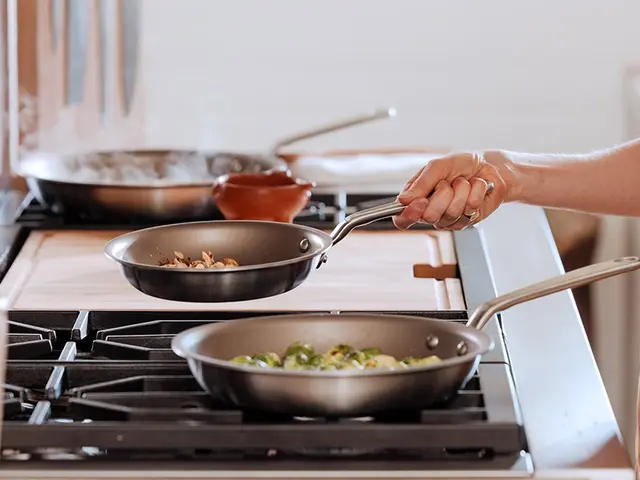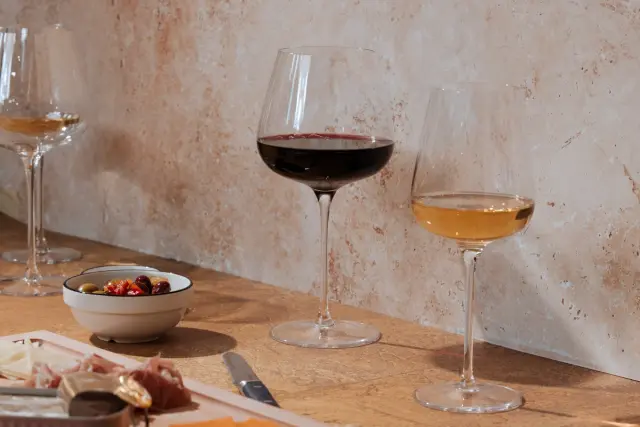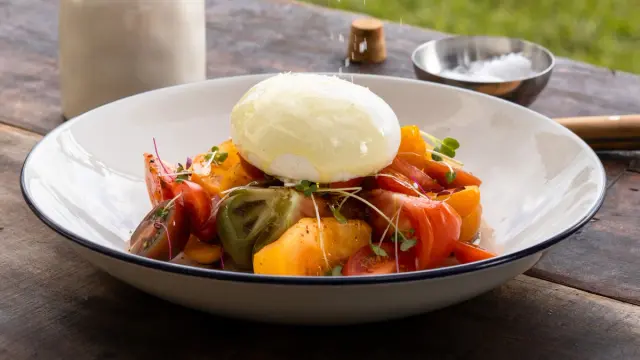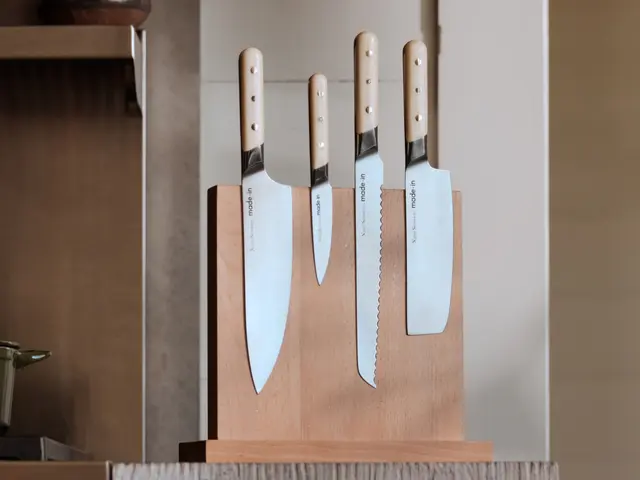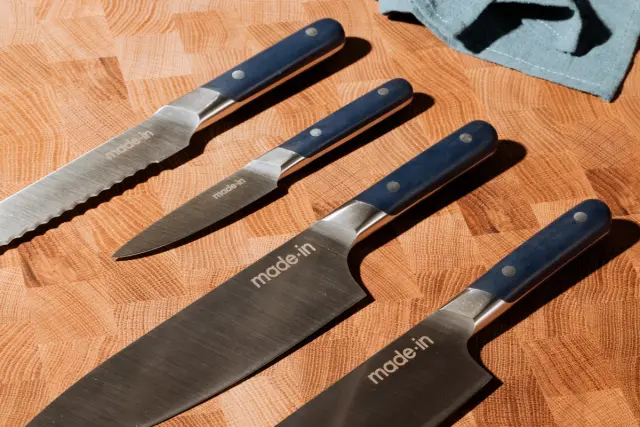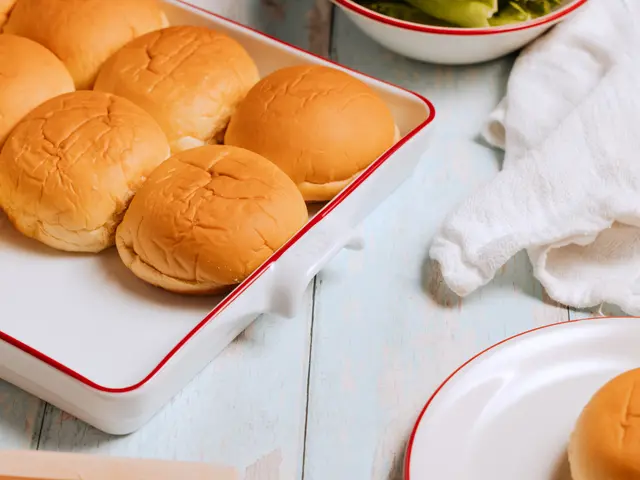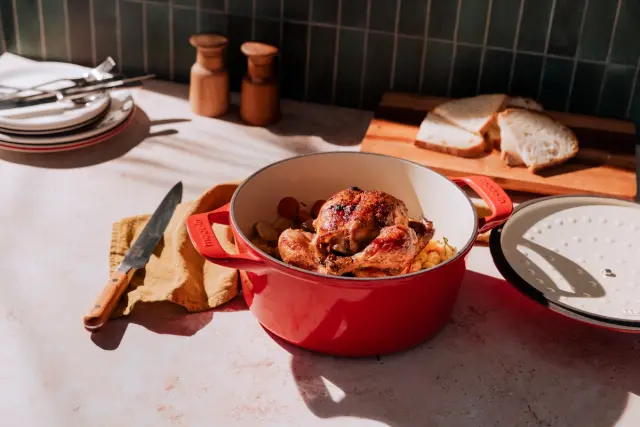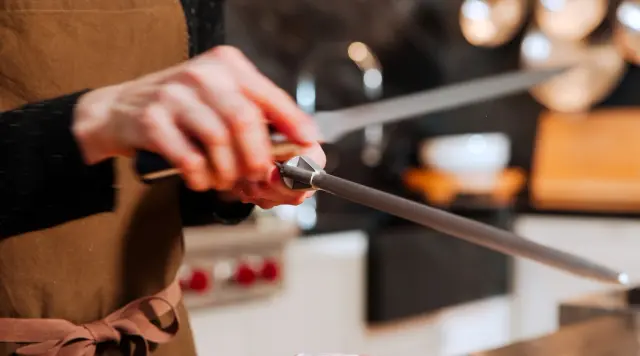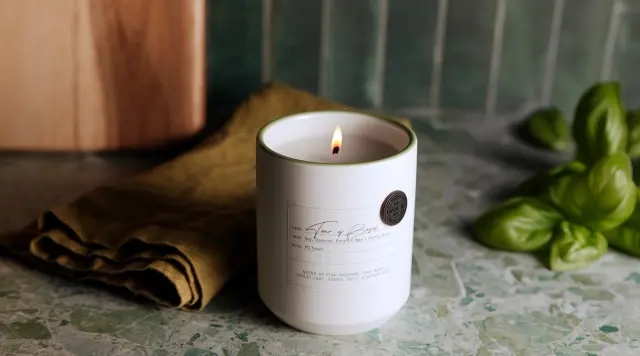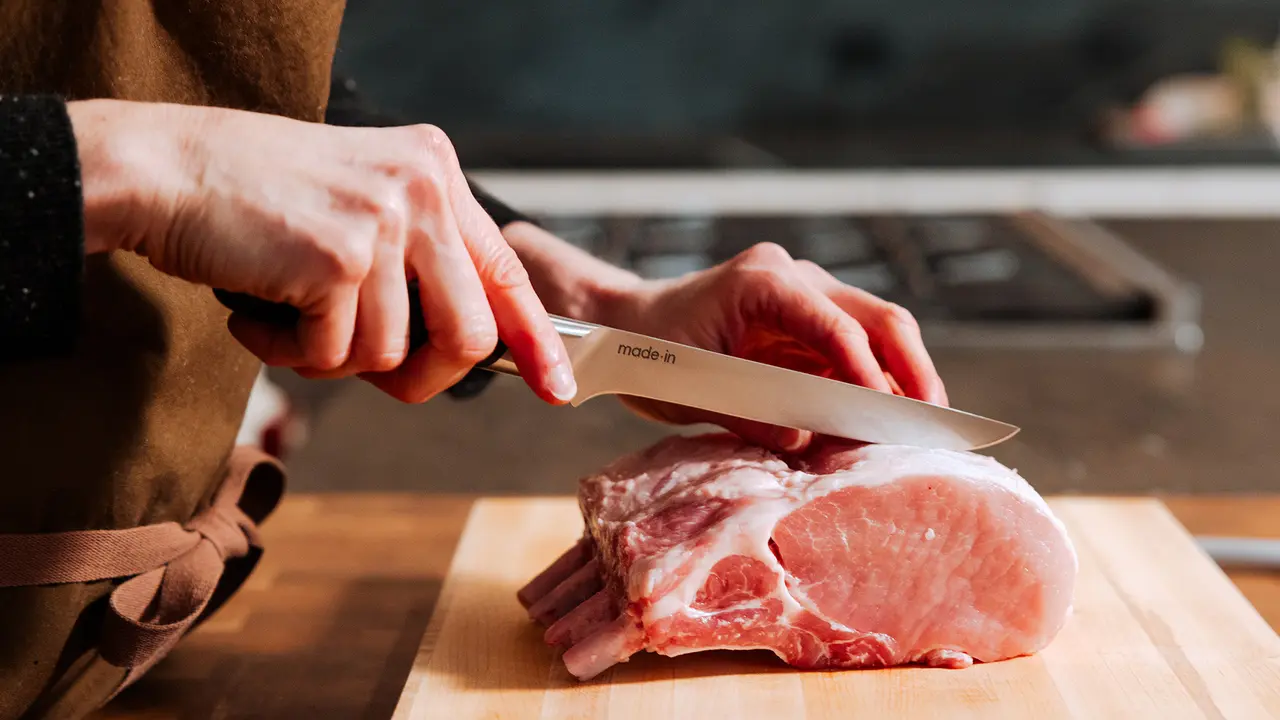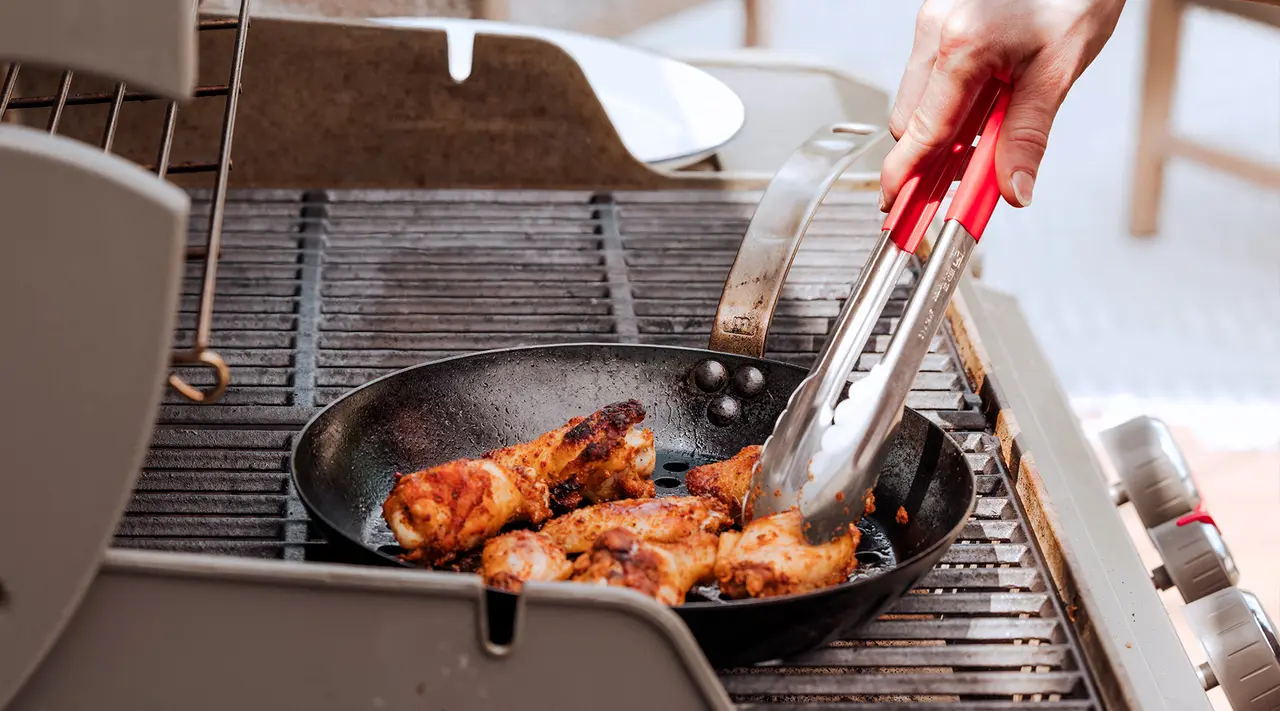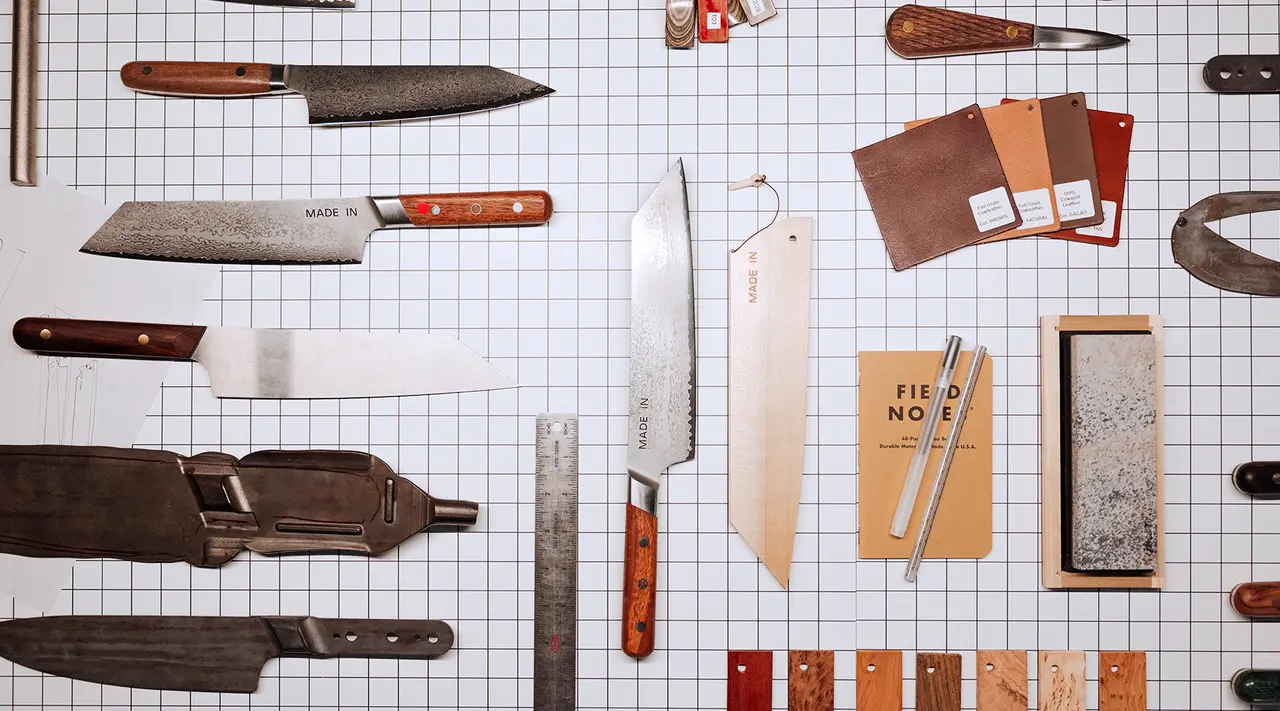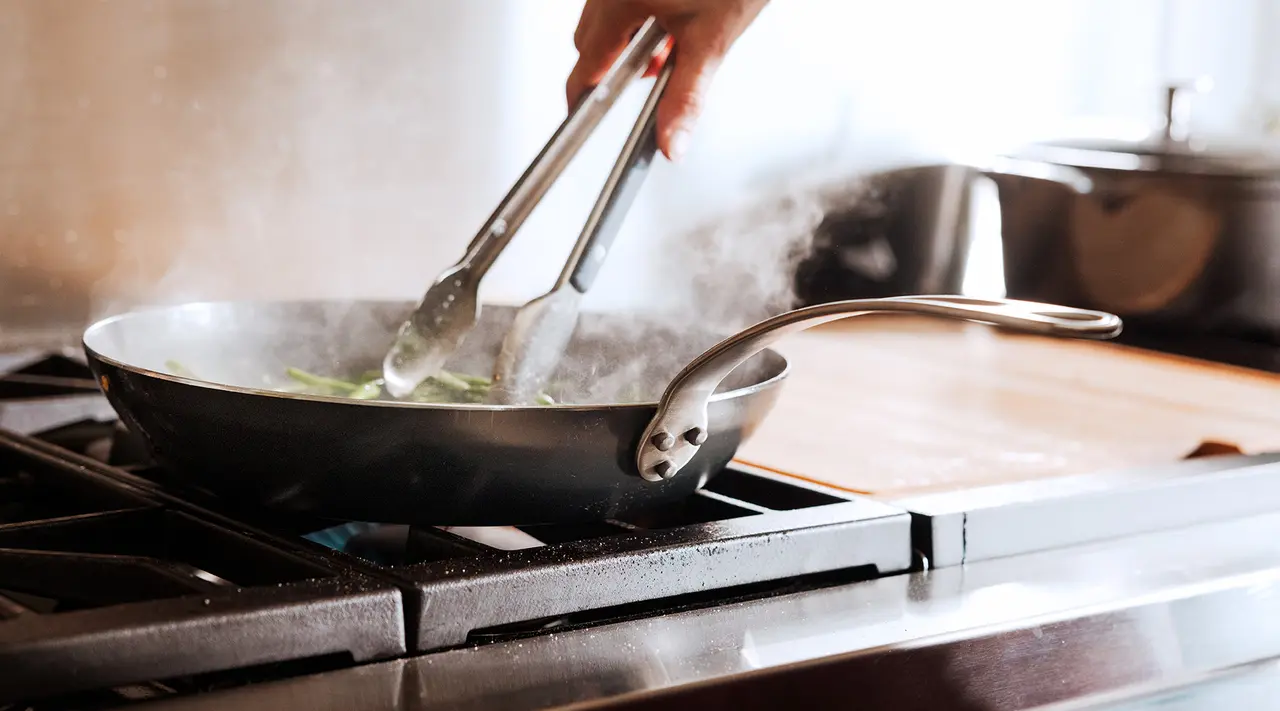If there’s one piece of cookware we reach for almost every day, it would be the frying pan. Like a good pair of blue jeans, a frying pan—also known as a skillet—should be versatile, long-lasting, and feel both comfortable and easy to use on a regular basis. Bonus points if it’s also oven- and grill-safe.
Once you’ve made up your mind to buy a new frying pan, however, you still need to figure out which kind to get. Carbon steel or stainless steel? 10” or 12”? To help make things a little easier, we put together a comprehensive guide to choosing the best frying pan for your needs, and how to keep it in great working condition.
Types of Frying Pans
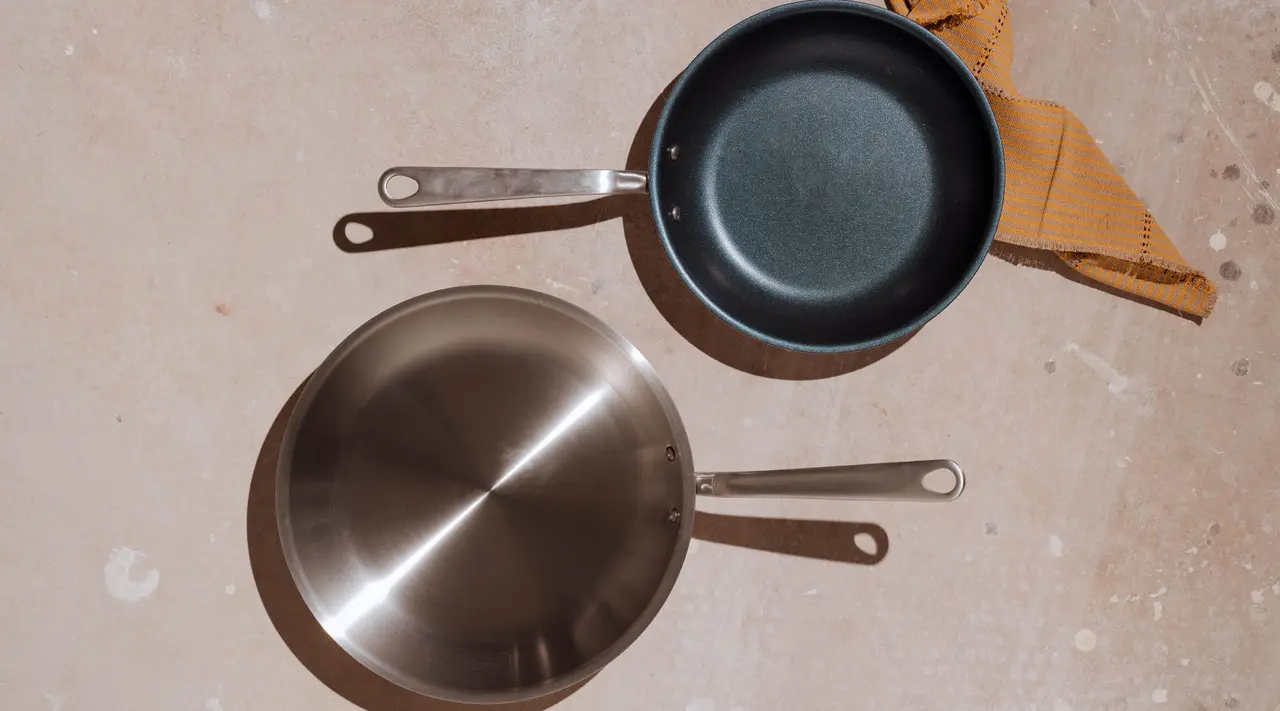
While the basic shape of a frying pan—flat-bottomed, shallow with flared walls, with a single long handle —doesn’t vary much, the material it’s made from does: you’ll find frying pans made of cast iron, stainless steel, carbon steel, aluminum, and so on. Here are a few of the most popular types of frying pan materials, and how to decide which one you should get.
Carbon Steel
A permanent fixture in professional kitchens, carbon steel is a middle ground between stainless steel and cast iron cookware. Like stainless steel frying pans, carbon steel pans are maneuverable, versatile, and highly responsive to changes in temperature. Yet like cast iron, carbon steel pans offer heat retention, durability, and non stick potential, courtesy of the layer of seasoning that’s developed prior to cooking with the pan, and which builds the more you cook with it.
And while you’ll need to do a bit of extra maintenance to keep that seasoning intact—much like how you’d care for a cast iron pan—you’ll be rewarded with a pan that combines the best parts of cast iron and stainless steel.
Cast Iron Frying Pans
Heavy, long-lasting, and with unrivaled heat retention, cast iron frying pans have nearly unlimited uses, from shallow-frying to roasting to baking. While they’re slightly trickier to maintain than other pans—they require hand-washing, and you may need to reseason unfinished cast iron from time to time—cast iron pans can last for decades or even lifetimes.
Note that cast iron can also be harder to handle because of its additional weight, so you won’t be able to flip or toss food as easily. If that’s an issue for you, a carbon steel pan might be a better choice.
Ceramic Non Stick
Ceramic cookware is not actually made of a stoneware material. Instead, it’s a variation of non stick coated with a layer of silicone, applied over a metal base. This is a self-sacrificing material, meaning that a small amount of the coating is released every time the pan is heated, and once it’s gone, it’s gone. The surface generally wears out after about a year of use—or less if you use it over higher heat.
In addition to their limited lifespan, ceramic pans are also generally not oven-safe, both due to their construction materials and the coating itself. Read more on why we don’t suggest these pans (and what we recommend instead) in our guide to ceramic cookware pros and cons.
Professional-Grade Non Stick
Versatile, easy to clean and maintain, and relatively inexpensive, non stick is a great place to start for new cooks and an essential worth investing in for everyone else. The first thing to look at when shopping for a non stick pan is the core construction—this is what sets it apart from materials like stainless steel, cast iron, or carbon steel. A high-quality core material (like stainless alloy) will put it on par with more durable materials in terms of heat responsiveness and control, while a cheaper material (like aluminum) will relegate it to egg duty only.
All this to say, high-quality non stick can be used for most of your daily cooking needs, from stir-fries to perfect grilled cheese—especially if it’s made with oven-safe coating. Read our guide to shopping for
Stainless Steel and Stainless Clad
Stainless steel pans are like the goldilocks of frying pans: they’re lightweight and easy to handle as well as responsive, versatile, and durable. Note that stainless clad cookware incorporates other metals and alloys in order to capture the best qualities of them all. This is why Made In’s Stainless Clad Collection tends to be better at retaining heat.
Stainless steel is typically also oven-safe and non-reactive (allowing you to cook acidic ingredients), and is relatively easy to clean and maintain. And, while stainless steel pans aren’t quite as effective as non stick when it comes to keeping delicate fish or scrambled eggs from sticking, they’re excellent for high-heat jobs like searing steak, caramelizing onions, and making a pan sauce.
Factors to Consider When Buying a Frying Pan

Choosing a frying pan is a bit like shopping for a chef knife: While there are a few standard markers of quality you should always look for, you should also consider how your new pan will fit into your life. Here are a few points to keep in mind when shopping for a frying pan.
Size
Frying pans come in a number of different sizes, but for daily use, we reach for either an 8” or 10” pan—this gives you enough room to evenly cook your food without overcrowding, and allows you to toss and flip to your heart’s content. Plus, one of the great things about a mid-sized frying pan is how easy it is to grab: If you’re making a 1am grilled cheese after a night out, you probably won’t feel like hauling out (or cleaning) a giant pan.
If you have a big family, however, or you often cook for a group, we recommend getting a 12” frying pan to have on hand in addition to a smaller one. Check out our guide to frying pan sizes for additional guidance.
Heat Distribution
If you’re looking for a pan with great heat distribution, high-quality carbon steel or stainless steel is your best bet—though a well-made non stick pan can offer solid heat distribution as well. With stainless steel, look for pans made from several layers of different metals (expressed in terms of “cladding” and “ply”) to ensure better heat distribution. Made In’s Award-Winning Stainless Clad is 5-ply, meaning five layers of four different metals and alloys are bonded together across 100% of the pan to provide an unrivaled cooking experience.
Durability
In addition to making sure your frying pan has great heat distribution, we also recommend investing in a pan that will last, and which is resistant to warping, cracking, and other forms of damage. In general, a pan constructed from high-grade materials by experienced craftsmen will be higher quality and live longer. This goes for all kinds of cookware: A high-quality non stick pan will also stay non stick for longer.
Handle
While the body of your pan might be made of an oven-safe material like cast iron or stainless steel, many pans come with plastic, wooden, or nylon handles that can burn or melt in the oven In these cases, the pan shouldn’t be used in the oven—always make sure the entire pan is oven-safe before transferring it to the oven. This is usually listed on the product page online, on the box, or in product information materials included in the box.
In addition to oven safety, you should also make sure your pan’s handle is comfortable and safe for you to hold. While you’ll pretty much always need an oven mitt before grabbing the handle of your cast iron, some pans—like Made In’s Stainless Clad and Non Stick—offer a hollow Stay Cool handle that does exactly what its name implies. (We’re not miracle workers, though—we still recommend using an oven mitt or dish towel when removing this cookware from the oven.)
Stovetop Compatibility
Another important point to consider when buying a frying pan is whether or not it’ll actually work on your stovetop. While gas and electric stoves are compatible with basically every kind of frying pan, , you’ll need to use a pan constructed at least partly of ferromagnetic materials like cast iron, carbon steel, and magnetic stainless steel. These materials help create an electromagnetic current when they come in contact with an induction burner, generating heat. Note that all of Made In’s frying pans are compatible with induction cooking. Oven Compatibility
Aside from whether your pan is induction compatible or not, you should also make sure it’s oven-safe if you plan on finishing food in the oven. Most cast iron, stainless steel, and carbon steel pans are fine for oven use—though it’s always better to check. And while Made In’s Non Stick cookware is able to be used in the oven up to 500F, many non stick pans are not oven-safe, so be sure to check the packaging or product page first.
How to Care for and Maintain Your Frying Pan
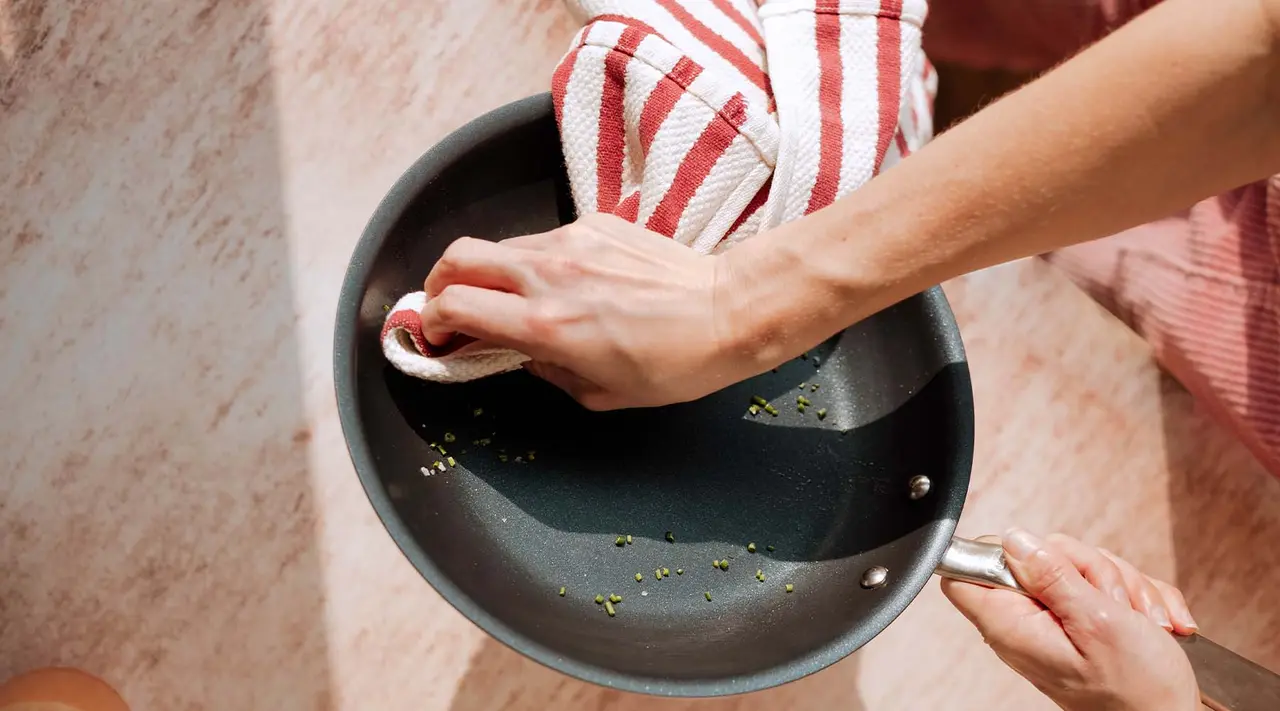
The better you care for your frying pan, the better it’ll perform. From cleaning to storing, here’s how to show your pan a little TLC.
How to Clean a Frying Pan Properly
As a general rule, it’s best to hand wash your frying pan rather than putting it in the dishwasher. Though certain pans, like Made In’s Stainless Clad, are technically dishwasher-safe, we still highly recommend hand washing to help prolong their lifespan. You should definitely avoid putting non stick in the dishwasher, even if it’s labeled dishwasher-safe, to avoid damaging the non stick coating and potentially warping the pan.
While a gentle scrub with a dish sponge, warm water, and a mild dish soap is usually enough to clean your frying pan, tougher messes like burnt-on food require a little more elbow grease. Here’s how to safely clean enameled cast iron, non stick, and stainless steel pans, depending on the level of mess.
How to Store a Frying Pan
When putting away your frying pan, always make sure you’ve thoroughly dried it first. This is especially important with unfinished cast iron and carbon steel pans, which can easily rust if they’re not fully dry. Make sure to clean your pan thoroughly as well, and ensure there’s no lingering food residue on it. Stuck-on food will become even harder to remove as it sits, and you could risk scratching your pan by scrubbing it too vigorously.
For storage, we highly recommend hanging your pan on a hook or pot rack if you have one—though you can also place them in a drawer or cupboard. Just make sure to place a dish towel, non-metal trivet, or thick napkin between each pan when stacking them to avoid scratches and chips.
Tips for Extending the Life of a Frying Pan
While a high-quality pan will almost definitely last longer than a cheap one, there are a few care-related points to remember when washing, storing, and cooking with your pan. These vary somewhat based on the material your pan is made from.
While materials like cast iron can handle high heat without sustaining any damage and only need a quick reseasoning to restore their natural non stick coating, non stick pans are comparatively delicate (though not as delicate as ceramic non stick). If the coating gets scratched or begins to break down from overheating, there’s not much you can do to fix them.
For washing, it’s best to hand wash your frying pan rather than putting them in the dishwasher. Like we mentioned earlier, you should always let your pan cool down before washing to avoid thermal shock. Across the board, try to avoid using metal utensils—silicone, wood, and other non stick-friendly tools are the safest bet.
Tips for Cooking with a Frying Pan

Buying the right frying pan is half the battle. Once you’ve settled on which one is best for you, here’s how to cook with it.
Choose the Right Oil and Temperature
For gently sautéed dishes and other foods cooked on low or medium heat, you can get away with using pretty much any fat. For high heat cooking or shallow frying, we recommend oils that have a high smoke point, like grapeseed, vegetable, or canola oil, and staying away from fats like extra-virgin olive oil, butter, and unrefined coconut oil. The latter options are more likely to cause oil splatter and will burn more easily, producing smoke.
Preheat the Pan
Depending on what kind of frying pan you’re using, you’ll often need to preheat it for a few minutes before adding your food. Carbon steel, stainless steel and cast iron should ideally preheat while empty for at least a few minutes before adding your fat and ingredients, with a few exceptions—when cooking bacon or other fatty cuts of meat, starting in a cold pan can help the fat render slowly and produce a crispy exterior.
On the other hand, a non stick pan should never be heated without anything in it, as this can damage the coating. Always add food or cooking fat to your non stick pan before heating it.
Add Food and Cook to Correct Doneness
When to add your food to the pan depends on what you’re cooking. With delicate ingredients like butter, seeds, nuts, and whole spices, it’s best to add them to a cold pan to keep them from burning. On the flip side, you should always add steak or pork chops to a very hot pan to ensure proper browning (unless you’re reverse searing, that is). You can tell whether or not a pan is hot enough if your oil is shimmering, or a droplet of water flicked onto the surface bubbles and evaporates quickly.
Avoid Common Mistakes
First, mind the heat: Too hot of a flame can cause your food to stick and burn in a stainless steel or unseasoned cast iron pan, and can damage the coating on your non stick pan. If using stainless steel, you should also make sure you’re using enough fat, which can further prevent sticking and burning.
It’s usually best to temper ingredients like meat—meaning you let it come to room temperature—rather than adding it to the pan still cold from the refrigerator.
How to Choose the Best Frying Pan for You

Before taking the plunge on a new frying pan, remember: The best pan is the one that fits your needs and cooking style. There’s no reason to buy an impressive-looking pan that you won’t feel comfortable using regularly—especially if it means going over your budget. If you plan to only use your pan for things like eggs, simple stir-fries, and reheating leftovers, an 8” or 10” non stick frying pan might be the way to go.
If you see yourself making dishes that require sustained high heat, or plan on using your pan for baking or oven roasting, you might be better off with cast iron or carbon steel. For a dependable, adaptable foundation, stainless clad is the way to go.
Still feeling indecisive? You may want to go for more than one frying pan. Since every pan has its own strengths, having at least two pans to choose from will make it easy to cook a wider variety of dishes.
Ready to Shop?
We’ll say it again: A frying pan is one of the most quintessential kitchen tools you can buy. Depending on the size and material of your pan, you can use it for everything from simmering sauces to searing duck breasts. And since you’re probably going to be using your frying pan every day, we definitely recommend taking a little more time to ensure you’re getting a solidly built, durable product instead of one you’ll need to replace in a year or less.
Whether you go for cast iron, carbon steel, stainless steel, or non stick, any of Made In’s frying pans are a solid bet. Now all you have to decide is what kind of steak you want tonight.
